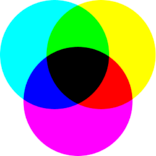Density 1.2 - 2.2 g/cm 3
R&G supplies highly concentrated, bright pigment pastes for coloring epoxy, polyester and polyurethane resins. Depending on the color, the viscosity is flowable to pasty. The colors are therefore easy to mix.As always, dark colors have better coverage than light colors.
Shelf life
If tightly sealed and stored at 15 - 25 °C, it can be stored for several years. Even longer storage at 40 °C is not a problem. However, the density changes at higher temperatures, and if you then work by volume with a mixing and dosing system, this can affect the color.
processing
Stir thoroughly before use.
The standard addition for top layers is 10-15% by weight. For particularly opaque colors, the laminating resin can also be tinted with 2-5% color paste. However, this makes it more difficult to detect air pockets in the laminate. Colored laminates should therefore be manufactured with particular care.
Addition quantity for condensation-curing silicones up to 3%. Not suitable for addition-curing silicones!
The universal color pastes contain a neutral binding agent, so they are added to the finished resin/hardener mixture.Depending on the color, pigments can increase or decrease the pot life.
Mixing shades
In principle, all colors can be mixed with each other. However, organic and inorganic color pigments (eg carbon black/titanium dioxide white) have a tendency to separate, which can cause slight streaks to form. Preliminary tests are therefore essential!
A short excursion into color theory
In principle, all other colors can be mixed from the basic colors cyan (C), magenta (M) and yellow (Y).
CMY model of subtractive color mixing:

Cyan (blue) + yellow = greenCyan + magenta (purple) = blue-violetYellow + magenta (purple) = redCyan (blue) + magenta (purple) + yellow = black
Source: http://commons.wikimedia.org/wiki/File:SubtractiveColorMixing.png
Features
- The primary colors cyan (blue), magenta (purple) and yellow cannot be mixed from other colors
- All other colors can be mixed from these three primary colors
In printing technology, black ("key") is still used, so that the CMYK color model is created.
RAL colours
Even if - theoretically - all colors can be mixed from the three basic colors, it makes sense to use ready-made colors. The luminosity of the "pure pigments" is unmatched and the quality is reproducible.As with many color products, the R&G universal color pastes are based on the RAL color chart.
Mixing colors
If a specific color you are looking for is not available, you may be able to mix it yourself. In principle, you always mix from light to dark, so add a little of the darker color to the lighter color until you achieve the desired result. Mixing two colors is generally not a problem, as you always get bright tones.
Basically, you can darken with black and lighten with white.
Production of brown and olive tones from emerald green RAL 6001 + traffic red RAL 3020
| | | | | |
| 100% Green | 75% Green + 25% Red | 50% Green + 50% Red | 25% Green + 75% Red | 100% Red |
The colors shown here are displayed differently on each monitor and are therefore not color-binding!
Processing in epoxy resins
Epoxy resins yellow more or less when exposed to UV radiation (sunlight), depending on the intensity. This is especially true for white-colored epoxy resins.However, white coloring is always useful as a light base for later painting.All other colors can be used for intensive, bright coloring without additional painting.
Universal colour pastes
Description:
Very opaque with high pigment content in a neutral-reaction binder. For pigmenting EP, UP or PUR resin systems. Not suitable for silicone impression materials.
Amount added to the finished resin/hardener mixture:
- Laminating and casting resins 2-5%
- For top coats 10-15 %




